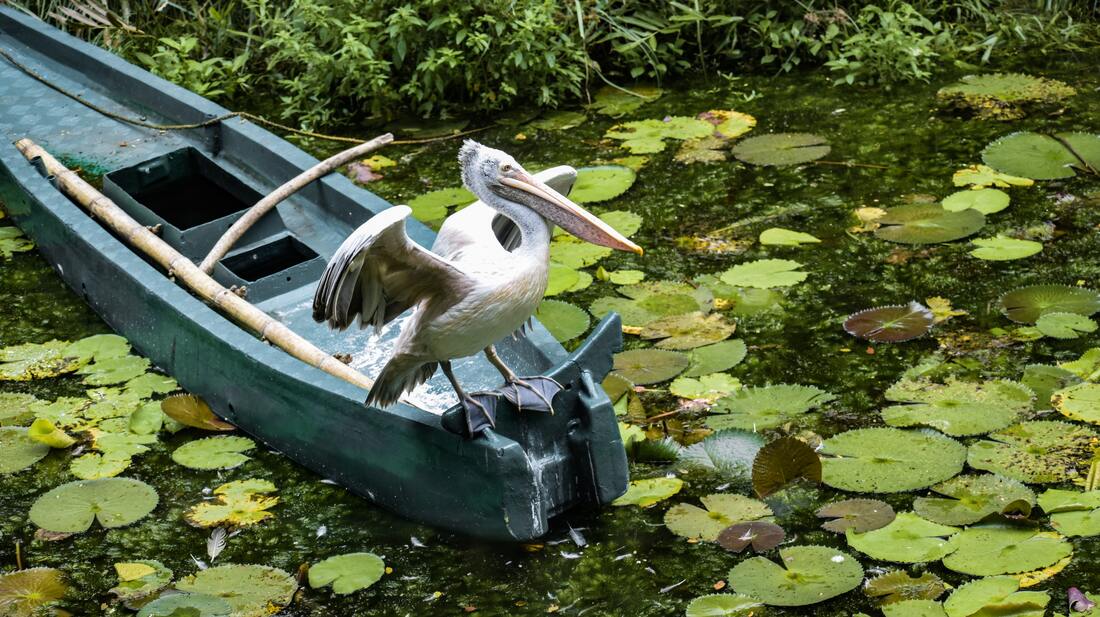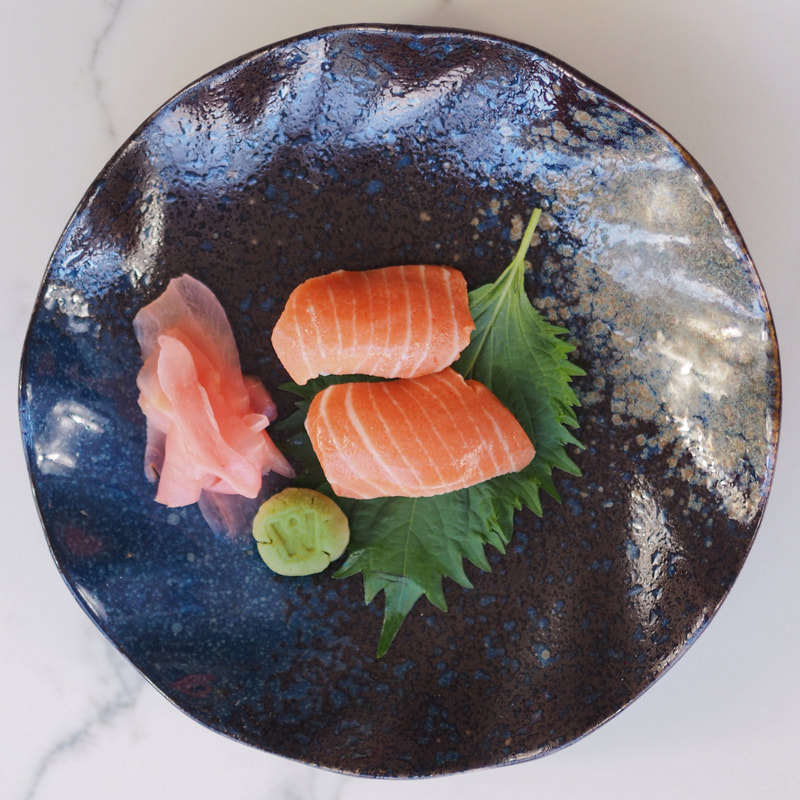|
SEARCH My Blog (Opens in new tab)
If you eat farmed fish now then you've nothing to lose Photo by Vineeth Vinod on Unsplash In a mere five years, lab-grown salmon will be on the sushi conveyer-belt, at least if a number of startups have their way. Well, they will have their way. Like the coronavirus vaccine, it is only a matter of time. In fact, Finless Foods was hoping to bring its cell-based bluefin tuna to market by the end of 2019. Although it hasn't entirely made it, it is very close and has served small select audiences its early production lab-grown shrimp. WildType, a startup making lab-grown salmon, has opened up a pre-order list for select chefs. Although the company is as much as five years out from commercial production, according to founders the company is looking to partner with chefs who want to incorporate WildType's sushi-grade salmon product into their menus. Could these lab-based meal creations be better for us than the real thing, and would you eat it? You might be surprised. Lab-fish is expensive, but wild fish are becoming more expensiveYou would imagine this way of culturing food would make it an expensive and exclusive product, and right now that's certainly the case. The costs are enormous, and the supply minuscule. However, the reality is the opposite, because the world's wild stocks of fish are declining precipitously. Here's a statistic that should get your attention: Wild stocks of Pacific bluefin tuna, the torpedo-shaped beasts that can weigh as much as a Steinway grand and cruise through oceans at freeway speeds, have plunged 96-percent from pre-industrial levels. (lamag.com) Inevitably, as supplies shrink, the price goes up. Even today, only the affluent nations can afford the best quality wild fish. For example, a "dark fleet" of hundreds of Chinese fishing vessels has illegally caught more than half a billion dollars worth of squid in North Korean waters since 2017. This is according to new research that used satellite technology, on-water observations and machine learning to track the unreported vessels. The illegal Chinese catch contributed to the sharp decline of the Japanese flying squid, and threatens fish stocks, marine ecosystems, and the livelihoods and food security of legitimate fishing communities worldwide. Right now, everyday Chinese are benefiting from this illegal fishing, but as the stocks dry up only the wealthy will have access. This is a global trend - due to overfishing. In 2019 a bluefin tuna sold for $11,000 per kilogram at Tokyo Fish Market - totalling more than $3m for the whole fish. Therefore, despite the large sums of money raised by the lab-grown seafood startups the prize is there when they can deliver. The momentum in fish-startups is growingIn 2018, the book The End of Animal Farming by Jacy Reese Anthis argued that cultured meat and plant-based foods would displace conventional animal products by 2100. As of 2019, over two dozen startups were working on cultured meat, for example:
At that time only six were focused on cell-based seafood, and three of them are based in California: BlueNalu is setting its sights on a variety of species, but especially those that cannot be easily farmed; Finless Foods is primarily focused on a bluefin tuna product; while the team at WildType is working on cell-based salmon. (npr.org) BlueNalu is aiming for serious scalability - a future where cities around the globe will be home to 150,000-square-foot facilities, each able to produce enough cell-based seafood to meet the consumption demands of more than 10 million nearby residents. It recently closed a $20m funding round. Does more energy have to go in than we can get back - the challenge of scalingThe challenge all the startups face is scale. How much energy does it take to produce lab-based fish, compared to the energy ultimately given back from the "flesh"? The flesh is grown without brains, organs, skin or any sentience, so it should require a lot less energy than the real thing. But feeding the cells is one thing, and converting a mush of them into muscle-like structures adds a second layer of energy burn. Making the economics work is the task of Tissue Engineering and the cellular science behind it. "When we estimate energy consumption, it's at the same level as beef or higher now, but there is lots of uncertainty in bioreactor design and the scales we are looking at now are quite small", says Hanna Tuomisto, a specialist in the environmental impacts of food production at the University of Helsinki. Ultimately culturing fish cells will probably use less energy than land animal cells, because fish cells will merrily reproduce at room temperature. And therefore fish-cell growers will benefit from the enormous investments being made in meat-cell growers by the likes of Bill Gates (Impossible Foods, and Beyond Meat). Is lab-fish better or worse for us than farmed-fish?The thought of eating lab-grown cells, like fish, is Orwellian - so-called "Frankenmeat", or in this case FrankenFish. But here's a surprise. It just may be a whole lot better for us than the farmed fish we eat today. The majority of salmon on the market is farm-raised, meaning it's farmed and harvested under controlled conditions in sea cages or net pens. The problem, according to some researchers, is that the crowded conditions of most farms can cause contamination. A 2003 report from the Environmental Working Group (EWG) found that seven out of ten farmed salmon purchased in grocery stores in San Francisco, Washington, DC, and Portland were contaminated with cancer-causing polychlorinated biphenyls (PCBs) at "levels that raise health concerns." Additionally, farmed salmon has been found to contain toxic chemicals methylmercury and dioxins, and farms have been accused of polluting the oceans, fostering disease, and spreading sea lice. Salmon farms have also been criticised for other questionable practices, including the content of the feed, which is often supplemented with chemicals to give the fish their pink colour (wild salmon develop it naturally). (onemedical.com) Lab-grown fish promise to be clean and free of contamination. Therefore, in theory, lab-grown fish should be less unhealthy than much of the farmed fish we eat today. Back to Wildtype - lab-based wild-taste salmonJustin Kolbeck, the founder of WildType, promises that their sushi and sashimi will be the "sushi or nigiri or sashimi that you would order at a sushi restaurant". The product that WildType hopes to ship will be equivalent to the saku blocks of fish meat that sushi chefs carve to prepare salmon. Chefs take a fish apart into saku blocks, and then cut out bits that go on nigiri and the leftover bits are made into rolls. The company has developed its own technology to replicate the taste and texture of wild-caught salmon. Kolbeck thinks the timing is right for the company's cultivated product. That's because of the rising awareness of dwindling fishing stocks, climate change, and the problems with farmed fish. As more shoppers are gravitating from the meat aisle to seafood, they realise that the supply chain for seafood is broken From mislabeling of fish to the problems associated with factory fish farming, aquaculture and environmental degradation — along with the risks of chemically contaminated fish — shoppers who want seafood are also increasingly looking for more information about the provenance of the food they're eating - Techcrunch. I must admit, I'm not too fond of the thought of eating lab-grown fish. But that's what my parents said about feedlots and farmed fish. I'm sure it will be perfectly ok, and better for the world. I'll eat it. > More posts to help you with EXERCISES > More posts to help you with DIABETES > If you are a @MEDIUM reader my publication Body Age Buster has hundreds of categorised posts which I have written especially for men and women over 50 Follow me on Quora for more health and fitness tips.
If you valued this article >> Follow me Leave a comment >> Share it >> Stay healthy If you have any questions email me and I will get back to you. Latest: get your free customised fitness plan designed uniquely for you.
|
ChoicesSince I was diagnosed at 50 with Type 2 diabetes I've been learning how to do bone-building fitness training which lowers my age. You can too. It's your choice. Walter Categories
All
Archives
May 2023
|

 RSS Feed
RSS Feed



